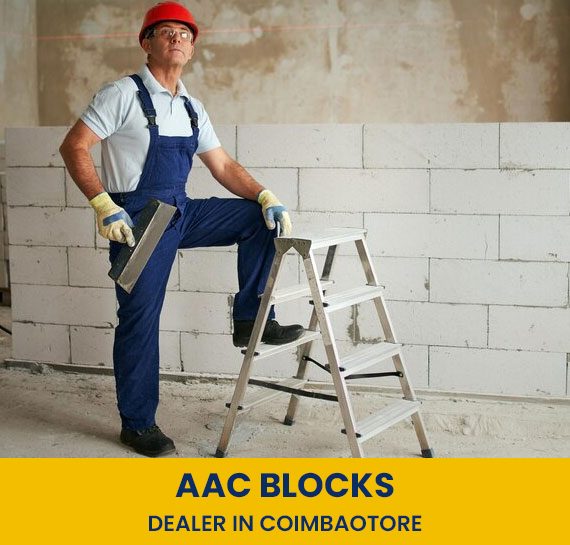- PH: +91 95431 00500
- Email: info@shreeshabuildingsolution.org
AAC Blocks

AUTOCLAVED AERATED CONCRETE BLOCKS
Autoclaved Aerated Concrete blocks was invented in the mid-1920s by the Swedish architect Johan Eriksson. AAC block is a unique and premium type of building material. These blocks are load-bearing, durable, eco-friendly and 3 times lighter when compared to red bricks. It is also known as Autoclaved cellular concrete - ACC Blocks, Autoclaved Lightweight Concrete - ALC Blocks, Porous concrete, Aircrete, etc. AAC block is porous, non-toxic, reusable and recyclable. AAC bricks are precast building materials that simultaneously provide structure, insulation, and mold resistance. We can save money on overall construction costs as well as the environment by selecting eco-friendly building materials to design your quality home. Cost of building materials vary from region to region. AAC blocks are available at the range of 2800-4000/- cubic meter. When AAC block is used instead of traditional blocks there is a total cost saving of 46.3%. Therefore, these blocks are more cost effective than others. Comparative analysis indicates that almost in all the parameters, the AAC blocks have a superior edge over other bricks.

CHARACTERISTICS OF AAC BLOCKS
Light weight
AAC blocks are light weight because of its aerated structure. As the blocks possess one third weight of traditional bricks, they are easy to transport.
Thermal insulation
The cellular structure of AAC blocks provides excellent thermal insulation. They help interiors to remain cool in summers and warm in winters.
Dimensional stability
AAC blocks possess low tolerances with perfect dimensions which helps in building uniform, thin walls with perfect finish.
Sound insulation
Autoclaved Aerated Concrete blocks can minimize sound transmission up to 42 decibels, hence it’s an excellent option for the construction of hospital, hotels, colleges, auditoriums, etc.
Strength and Durability
Made with a higher weight ratio, AAC blocks help in building a strong structure, also ensuring durability as they are unaffected by environmental conditions.
Fire resistance
Walls of AAC bricks possess a minimum thickness of 100 mm hence can resists fire up to 4 hours. These blocks are excellent for industries and companies, which are vulnerable to fire accidents.

MANUFACTURING PROCESS
AAC block is a precast product manufactured by combining pulverized fly ash, gypsum, lime, cement, water and aluminium powder poured into a mould. Once introduced into the concrete, aluminium powder reacts with lime and fly ash resulting in the formation of millions of microscopic hydrogen bubbles. The hydrogen bubbles cause the concrete to expand roughly double the times of its unique volume. The hydrogen in consequence evaporates leaving a high closed aerated concrete. Then aerated concrete is reduced into blocks which are then steam and strain cured in an autoclave for 8 to 12 hours.
ADVANTAGES OF USING AAC BLOCKS
AAC block consumes fly ash, which is a big problem for thermal power plants.
AAC products are not affected by harsh weather conditions and will not degrade under atmospheric pressure.
In AAC Blocks, Less joints results in saving of mortar.
AAC blocks possess excellent Sound Transmission Class(STC).
AAC blocks are bigger in size than conventional bricks resulting in lesser number of joints.
AAC blocks are best in Class Fire rating with 4 hours.
As AAC is composed of inorganic minerals, it does not promote growth of molds.

APPLICATIONS OF USING AAC BLOCKS
AAC blocks are used to build multi-storey as well as small buildings.
The blocks are used both in external and partition walls due to premium insulating properties.
Autoclaved Aerated Concrete can be used for internal walls, as it can be finished without plaster.
AAC bricks are used for the construction of dwellings and business.
AAC blocks are used to build kitchen surfaces and the same kitchen can be removed easily without any damage to the surroundings.
Autoclaved Aerated Concrete blocks enables the construction of a fire place due to its low weight

COMMERCIAL PROSPECTS

